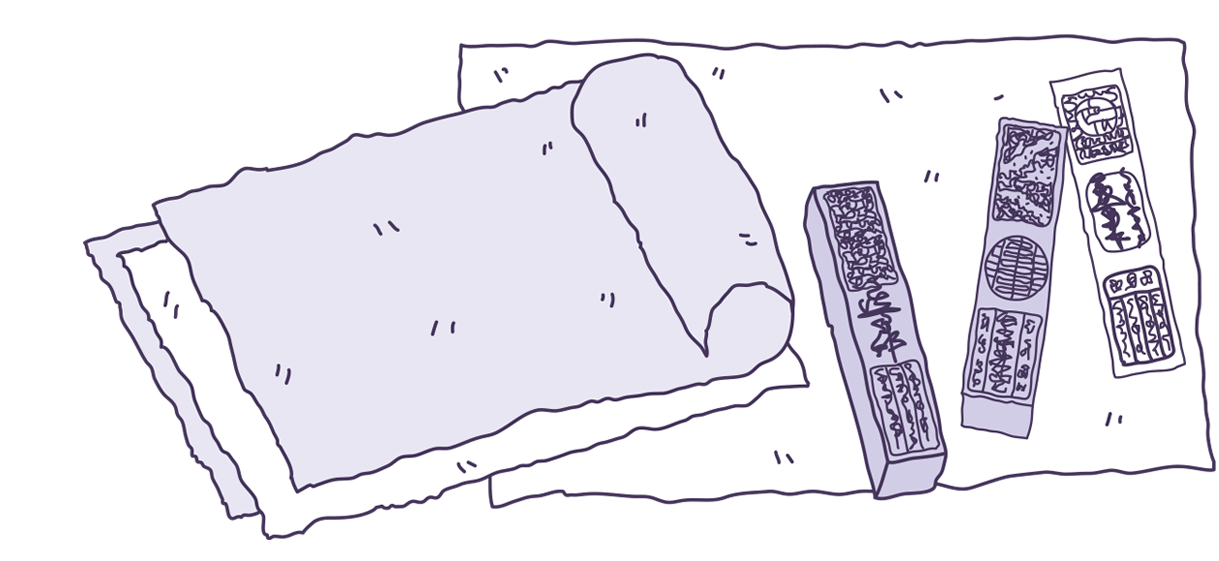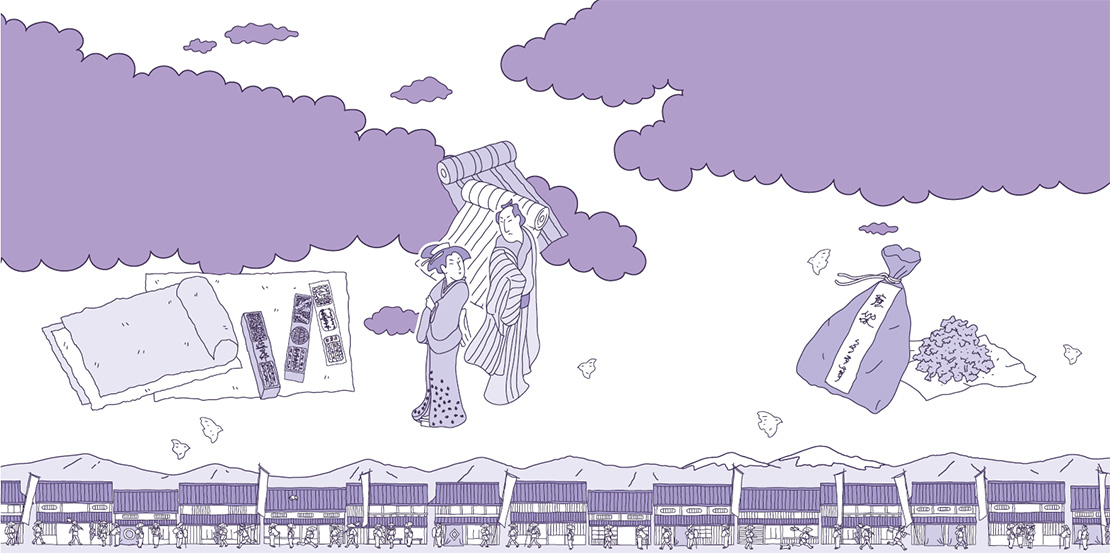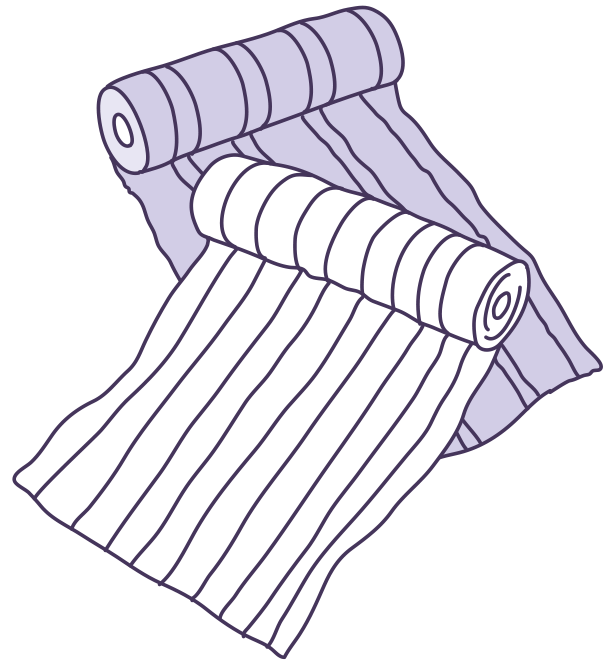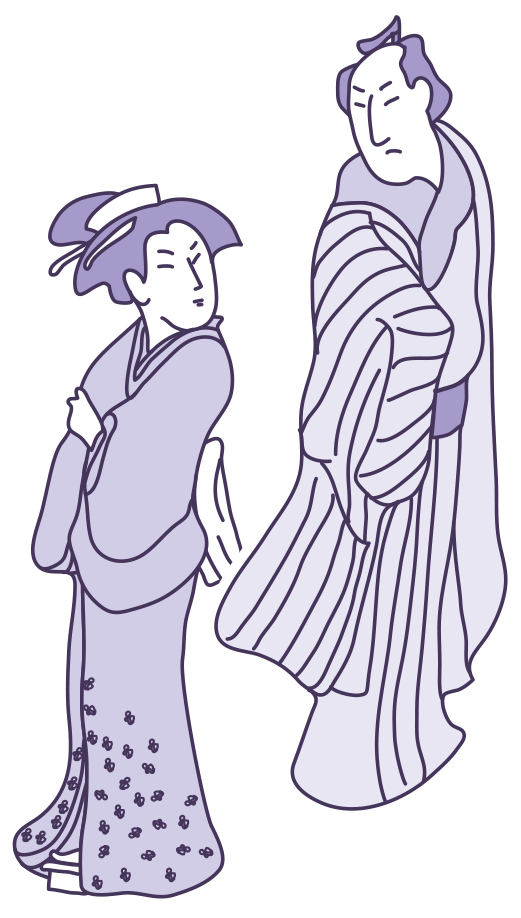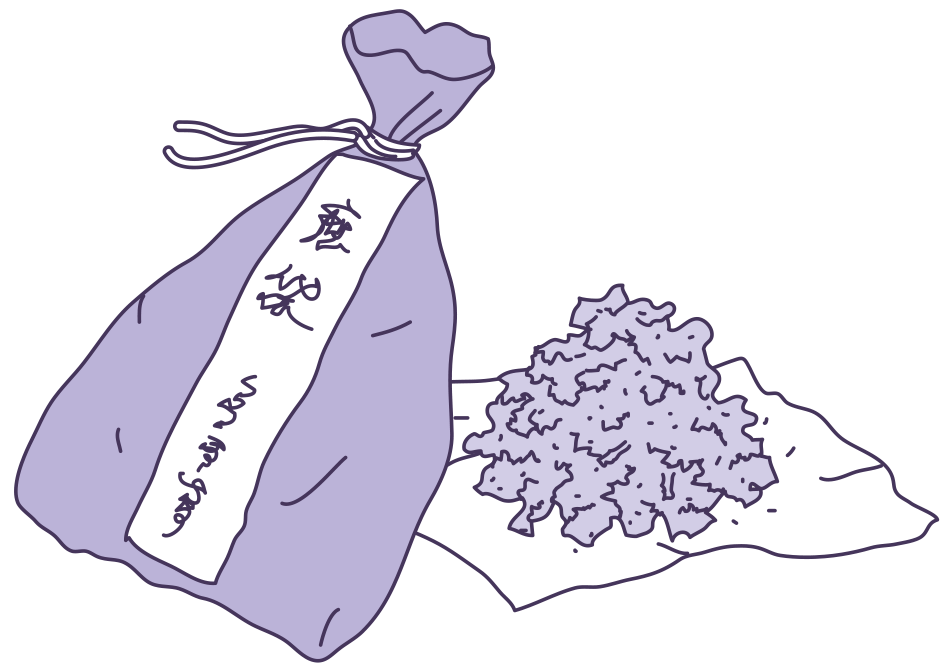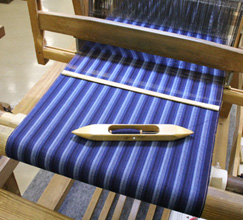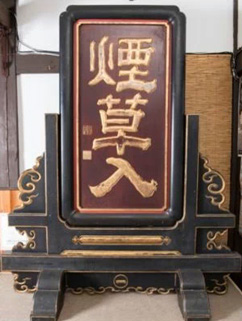Matsusaka Cotton
The Striped Fabric that Captivated Edo Urbanites
Matsusaka cotton is a striped fabric made with threads dyed in natural indigo. It is said Matsusaka merchants got the idea for the design based on a fabric Kadoya Shichirobe sent from Vietnam—the cloth he sent, known as "ryujofu," featured a pattern with stripes like the veins of a willow leaf. Because of laws limiting extravagance, people at the time couldn't wear showy clothing, and the affordable, durable, and beautiful Matsusaka cotton captured the hearts of Edo urbanites, and became a huge hit.
Variations of Stripes
Thanks to the different shades of color indigo dye can produce, the possibilities for pattern variations are endless. Sample books showing different types of Matsusaka stripes were available, even during the Edo period.
Matsusaka's History with Cotton
Techniques to produce textiles have existed in the Matsusaka area from long ago, and cotton weaving began in the latter part of the Muromachi period (1336-1573). In the Edo period's "Wakan Sansai Zue" (an encyclopedia consisting of 105 volumes), Ise Province's Matsusaka cotton is described as a product of the highest quality.
Tea
Kabata Tea, Said to Have Been Offered to the Tokugawa Shogunate
Blessed with good climate and fertile soil, tea cultivation has thrived in the Ise region from long ago. It is said that Ise tea spread through Japan via Ise merchants, and high-quality tea from Kabata, cultivated in the upper reaches of the Kushida River, was offered as tribute to Tokugawa Yoshimune, the eighth shogun of the Tokugawa shogunate. In the final years of the shogunate (1853-1867), tea became a highly valued export thanks to the efforts of the three brothers Takegawa Chikusai and Kokubu Nobuchika from Izawa, and Takeguchi Nobuyoshi from Chuma.
Let’s Walk Matsusaka
Weave Your Own Matsusaka Cotton
The Matsusaka Cotton Center in Honmachi offers a full experience where you can enjoy hand-weaving your own Matsusaka cotton. Of course, you're able to take home whatever you make!
Cigarette Case Sign
There used to be many stores along the road to Ise with signs advertising "Tsuboya Cigarette Cases." An authentic cigarette case sign from those days is on display at the Matsusaka City Museum of History and Folklore.
